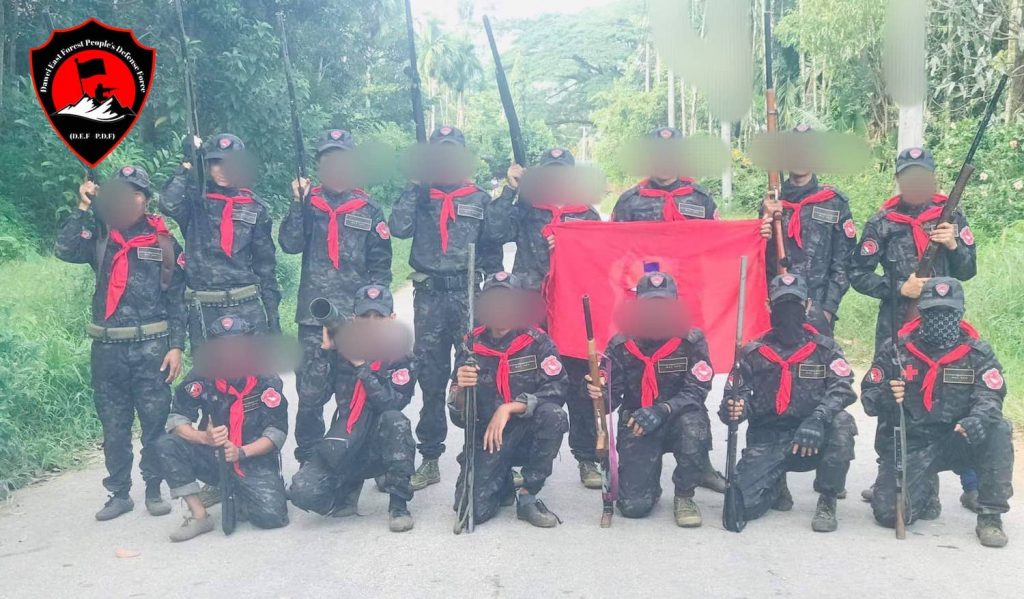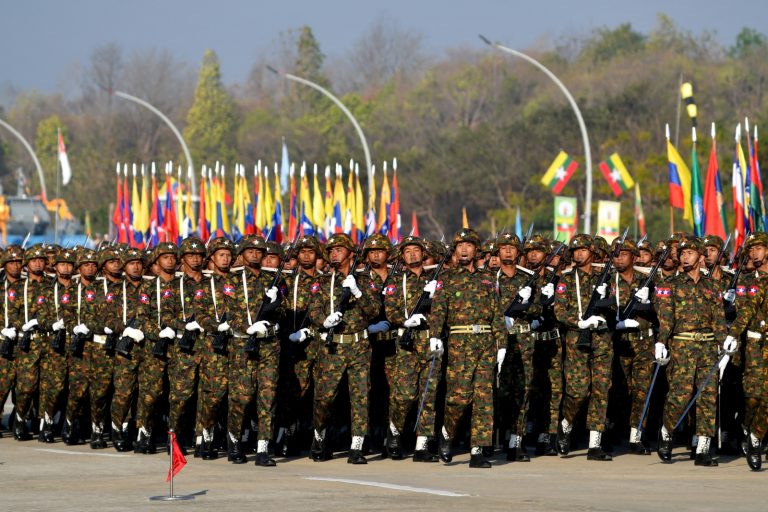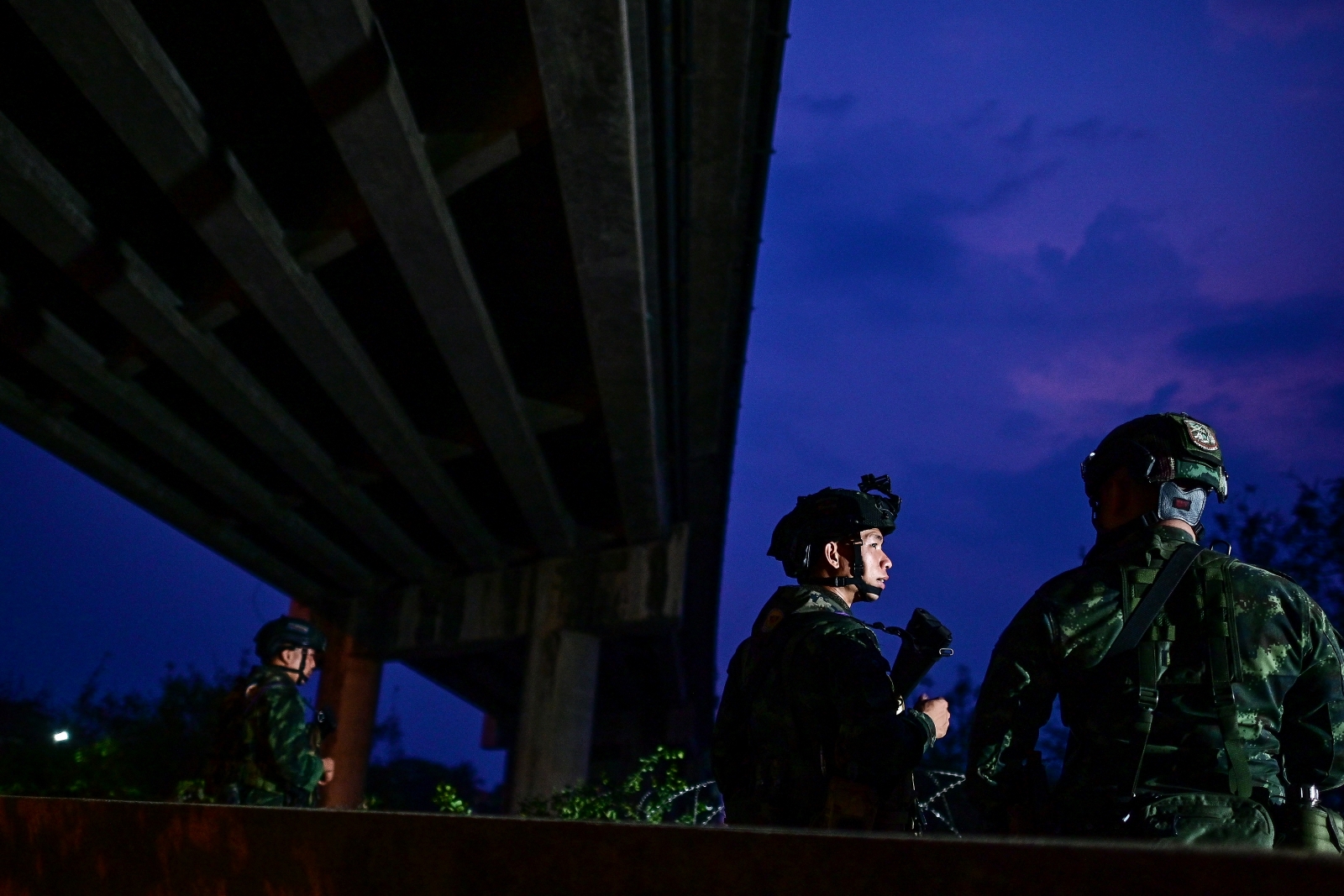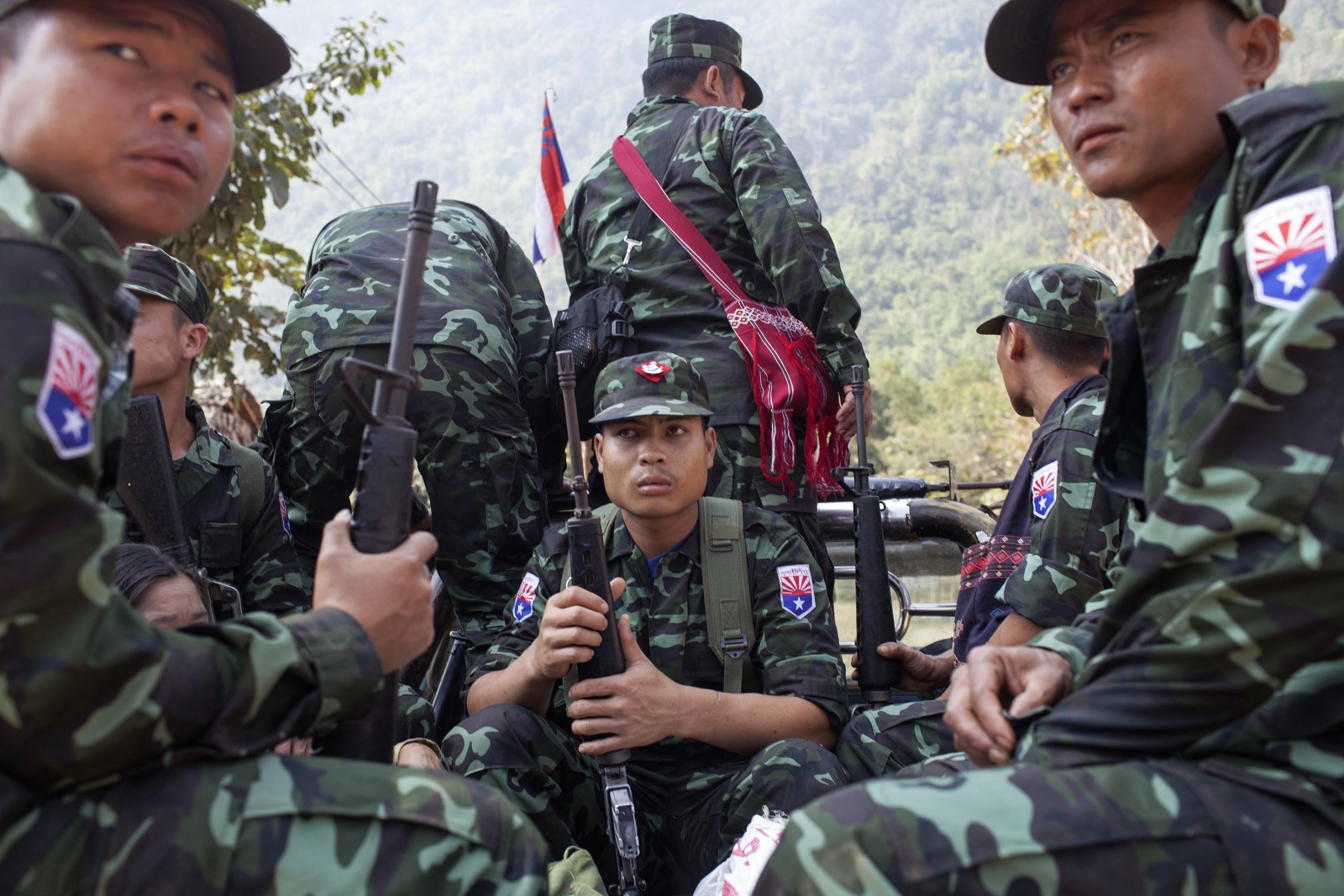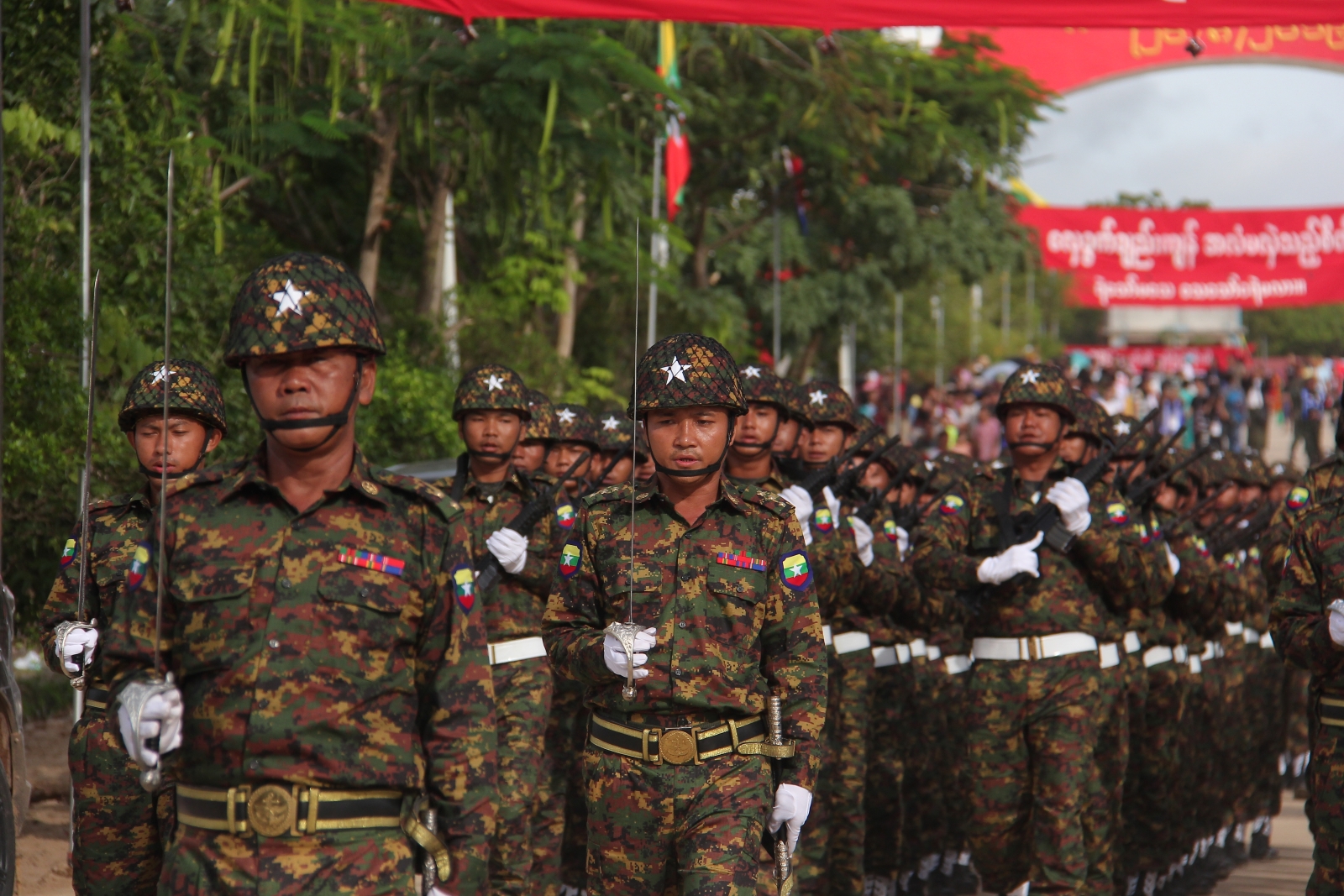In Myanmar’s far south, revolutionaries are trying to open a new front in the war against the junta but are struggling with a lack of funding and weapons, despite some assistance from Karen ethnic armed groups.
By FRONTIER
Comrade Yound Ni is worried about food and ammunition. The recently launched “one month, one gun” fundraising campaign has yet to live up to its name.
“Since we need automatic rifles for our team, we started a fundraising campaign to buy one gun a month. We set a target of K7.2 million, but we have only received around K4.2 million in donations,” Yound Ni told Frontier on August 30. K4.2 million is about US$1,300 at current market rates.
A member of the Dawei East Forest People’s Defence Force, Yound Ni and other resistance fighters in Myanmar’s remote southern Tanintharyi Region along the Thai border are hoping to open a new front in the war against the junta. But as elsewhere in Myanmar, funding remains the biggest barrier.
“We have a lot of people to fight, but we don’t have enough weapons. Not only our armed group, but other groups are also facing situations where they have insufficient weapons and financial support,” said Yound Ni.
After the military seized power in a coup in February 2021, it cracked down on peaceful protests with brutal force, killing hundreds. Many young people then turned to armed revolution, forming People’s Defence Forces in an effort to overthrow the regime. While Tanintharyi has seen some sporadic clashes, Yound Ni said the fighting pales in comparison to the conflict raging in some other parts of the country.
“Currently, there is no fighting in Tanintharyi comparable to Karenni [Kayah] State or Sagaing Region, where fighting is intense. Instead, there are a lot of stealthy attacks,” he said. “I think that because of the remote location and the need for weapons and money, we can’t launch an open offensive.”
He said that most of the PDFs in Tanintharyi rely on hand-made guns, while the few who cooperate with ethnic armed groups have access to better weapons.
“Because we don’t have enough weapons and ammunition, for big missions we must do joint operations with other forces, not as a single team. One group may be weak, but if many weak groups are combined, it will not be weak anymore. So joint missions are more effective and more successful,” said Yound Ni.
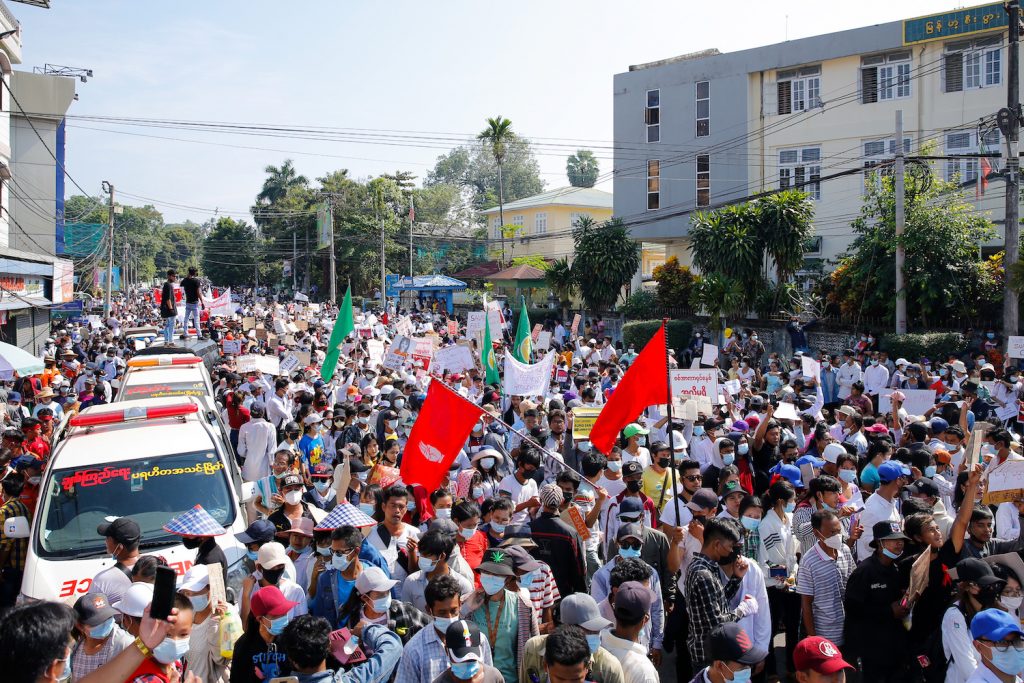
The Karen connection
The heavily forested region of Tanintharyi is home to some of Myanmar’s most pristine coastlines, with islands scattered into the Andaman Sea. But the natural beauty is undercut by a strong military presence; Tanintharyi hosts the army’s Coastal Region Command and an air force base. Despite this, the National League for Democracy scored a clean sweep in Tanintharyi during the 2020 election, which the military refused to recognise, winning every single elected seat in the regional parliament and every Tanintharyi constituency in the national parliament.
Tanintharyi Region is also close to Kayin State – separated by a thin sliver of Mon State – and historically has a significant Karen population. Some Karen armed groups, which have been fighting for political autonomy for decades, have a presence in the area, lending support to the budding resistance.
Padoh Saw Taw Nee, a spokesperson for the Karen National Union, said the seven battalions in the Karen National Liberation Army’s Brigade 4, a Karen National Defence Organization battalion and a few Kawthoolei Army battalions all operate in Tanintharyi.
The KNLA and KNDO operate under the KNU’s command, while the Kawthoolei Army controversially split from the KNDO after its commander was dismissed for overseeing the massacre of 25 prisoners and refusing to cooperate with the KNU’s investigation.
Joint operations between PDFs and Karen armed groups appear to be on the rise. On September 6, members of the Dawei-based Spring Guerrilla Forces coalition and the Kawthoolei Army attacked the military, claiming to have killed 12 enemy soldiers while seizing several weapons. It was the fiercest battle so far this year, according to resistance fighter Saw Nway Oo*. (Nway Oo means “spring” in Burmese, and the current anti-military uprising is known as the Spring Revolution).
“The Spring Guerrilla Forces are a coalition of small PDF groups based in the area who fight together. Before, we used to fight together with the KNDO group, but now that it has changed to Kawthoolei Army, we still fight together,” he explained.
Nway Oo said ethnic armed groups do not have as strong of a presence in Tanintharyi as they do in some other areas, like Kayah and Kayin states.
“So, many of the battles in Tanintharyi are more like guerrilla warfare,” he said.
Taw Nee said the KNU has occasionally fought the military in Tanintharyi, sometimes alongside PDFs, which the KNU also trains in the region.
“Battles don’t last as long in Tanintharyi, and don’t occur as often as in Kayin State,” he said, estimating that there is 10 times as much fighting in Kayin State.
But even the relatively lower levels of fighting are having a severe impact on civilians in Tanintharyi Region.
“There are 1,150 people displaced in Dawei District and 3,350 in Myeik District,” said U Myint Oo*, an aid worker with the Dawna Tenasserim IDP assistance group. “Tanintharyi Region has never had such displacement before. It was only after the military council took over.”
While Karen armed groups had occasionally clashed with the military in some parts of Tanintharyi before the coup, fighting was not as widespread or intense as in many of Myanmar’s other border states.
He also accused the military of setting up blockades around IDP camps, preventing them from getting food and medicine, leading to unnecessary deaths from illness.
U Saw Win, a resident of Kaku village, said that although the frequency of fighting is not as high as in other states and regions, the military still reacts to any resistance with extreme brutality.
He said in late May, there was a four-day battle in Ta Ku village in Tanintharyi Township. Afterwards, the military allegedly beheaded two captured PDF members and two ordinary civilians.
“This area has never experienced war before. I felt quite sad when I saw the bodies of people who had been killed and the houses that had been burned,” Saw Win said.
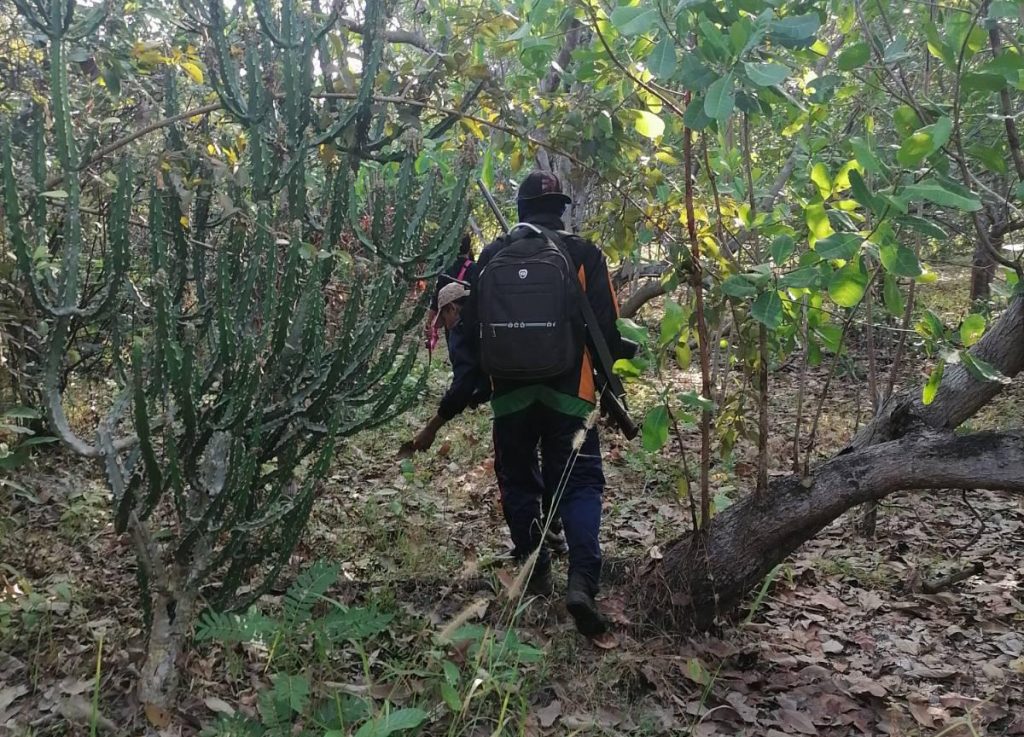
Hit-and-run tactics
Ko Ko Gyi, leader of the Southern Warriors Defence Force, confirmed that two of his troops were beheaded, accusing the military of attacking the villages unprovoked, opening fire indiscriminately and destroying houses.
“We can say that the Ta Ku village battle was the most brutal battle we have ever faced,” he said.
Since then, Ko Ko Gyi said the group focuses on carrying out joint ambush attacks and bombing military convoys but avoids open confrontation.
“The main thing we need is weapons. We are an independent group, so our funds are donated by close friends, locals and people living abroad,” Ko Ko Gyi said, adding that the lack of weapons means sometimes the group can’t defend people from military attacks.
Yound Ni also said his group mostly focuses on hit-and-run style ambushes, but sometimes confrontations are inevitable. In July, a joint force of resistance groups attacked a military convoy with landmines in Thankathun village in Dawei Township.
“We conducted an operation in cooperation with the Eastern Defense Force and the Black Leopard Group. Four military council soldiers were killed, and their vehicles were damaged. One of our comrades was killed,” recalled Yound Ni.
He said in most of their missions, they plant landmines and retreat, but this time they were forced into an open shoot-out.
“If only we had better weapons, we would be able to fight more similar battles,” he said.
Yound Ni’s group, the Dawei East Forest PDF, was founded in August 2021 and submitted to the authority of the National Unity Government in April of this year. The NUG is a cabinet appointed by lawmakers elected in the 2020 polls.
Despite its affiliation with the NUG, Yound Ni said the group has received barely any funding from the parallel government. The NUG is stretched thin trying to bankroll a revolution with no financial support from the international community, relying primarily on voluntary donations from Myanmar people and the diaspora.
“We once received some ammunition from the NUG, which we referred to as lipstick. Now we are continuing the revolution with donations from the people,” Yound Ni said.
Like the SWDF, the Yebyu PDF operates independently from the NUG, which makes it difficult to secure funding even from outside donors.
“Our group sometimes asks for help from fundraising groups based abroad, but they refuse because our group is not under the NUG,” said Yebyu PDF’s leader, who goes by Kiwi. He said the group still follows the NUG code of conduct, refrains from extrajudicial killings and frequently fights alongside NUG-affiliated groups.
Kiwi said the reason the group declined to join the NUG is because it sees itself as a temporary local militia which will be disbanded after the Spring Revolution is successful.
“Even though we are not under the NUG, we often do joint missions with the People’s Defence Forces under the NUG. But when I was told I could not receive funds because I was not under the NUG, I was exasperated. There is no need to limit the revolution,” Kiwi said.
Despite the difficulties, Myanmar’s southern revolutionaries say they remain committed to the cause.
“We want the people to know that we are fighting as much as we can,” said Nway Oo.
*denotes pseudonym upon request for safety reasons


